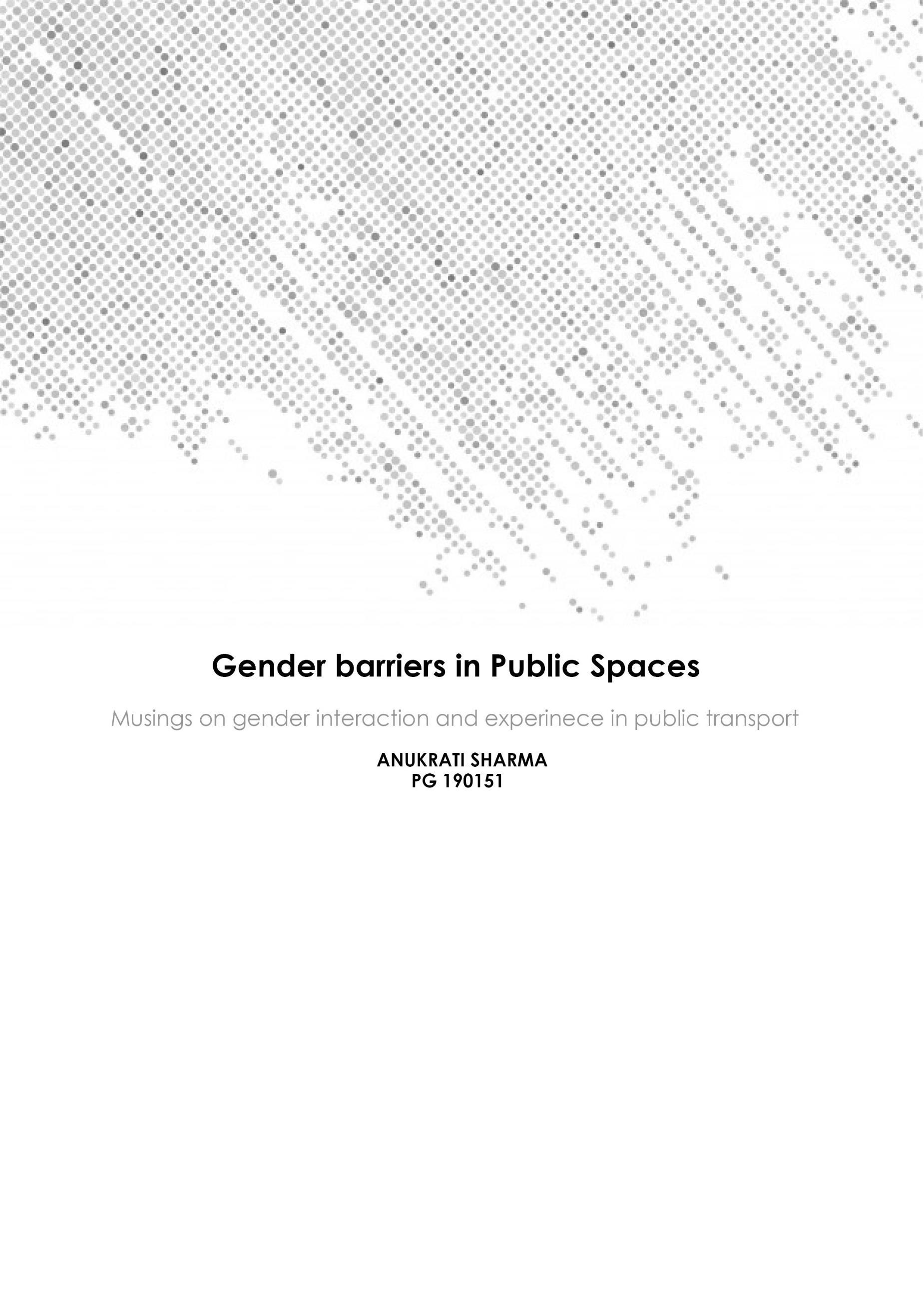
1 minute read
Gender Barriers in Public Spaces
Experiencing public transport in metropolitan cities in India
A recent commute in AMTS (Ahmedabad Municipal Transport Service) bought back a vivid memory of my first experience of using city-buses in Bangalore during my college internship period. But before I start with that, let me first tell you what I was doing in the AMTS. It was a busy Tuesday morning when I and my batchmate decided to start with our project that dealt with documentation and investigating patterns of public movement on public transport-in our case- AMTS. Thus, ready with our video recorders and notebooks, we boarded the bus at 7:30 in the morning. Documenting the public, continuously boarding and alighting from the bus needed a vigil eye on movements they were making, and one particular lady caught my eye. She boarded the bus from rear automated doors (as per the rule), and decided to take the support of my seat and placed her bag at my feet. Busy with my own "meticulous" record-keeping, I soon forgot about her, until she picked up her bag and started to push through the crowd to get to the front part of the bus. I, being attentive to people who would be getting down at the next stop, assumed that she has made all that effort to alight at the next stop. However, I soon realised that was not the case.
Advertisement
She had simply moved away from the crowd of male passengers that had boarded the bus in recent stops. Further down a few stops, another situation caught my attention as few female passengers stayed standing, despite the availability of seats. A quick glance (quick, because I still had to document other passengers!) made me realize that all the seated passengers were males and I wondered if that was a possible reason. I had seen this pattern numerous times- this gender-based congregation in public spaces, and this particular case, even at the cost of much discomfort.
It made me notice the intangible boundaries that passengers had inordinately made within the bus. Females crowding closer to each other, and similarly, males next to each other.


